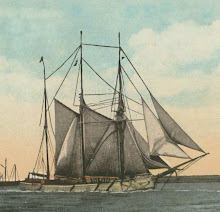There is very little dispute today about whether or not the area surrounding the Great Lakes of North America was indeed glaciated. Current discussions tend to center around the features found in the area, the drainage patterns of the region before the Wisconsin Glaciation, and the stages that combined to form the current lakes system.
The modern drainage pattern for the region includes a watershed that encompasses both peninsulas of Michigan, western Wisconsin and Minnesota and the extreme northern portions of Indiana, Ohio as well as the New York panhandle and Southern Ontario. All rivers and streams in these areas drain into the Great Lakes. From the lakes they flow through the St. Lawrence River and into the Atlantic Ocean.
The water from Lakes Superior and Michigan both flow into Lake Huron through the St. Mary's River (Superior) and the Straight of Mackinaw (Michigan). This water in turn flows into Lake Erie through the St. Claire and Detroit rivers. This also includes the water from the Georgian Bay. Lake Erie drains through the Niagara River into Lake Ontario and then out into the Atlantic Ocean through the St. Lawrence River.
Before the advance of the Wisconsin glacier, the flow of water from the region followed much the same course as it does today. The major difference between the two is in the connection between Lakes Huron and Erie and the St. Clair and Detroit Rivers. Before the ice advance, the water from the current Superior, Michigan and Huron basins flowed into the area now occupied by the Georgian Bay off Lake Huron. All of the water from the current Lake Huron area, south to Lake St. Clair, flowed into this waterway. From there it flowed through the area now occupied by the Trent River to the Bay of Quinte on Lake Ontario ).
The southeast portion of Michigan and Northern Ohio and Indiana were drianed by the preglacial Erigan River that flowed over the land currently occupied by Lake Erie, over the Niagara Escarpment and through the area of Lake Ontario where it merged with the water from the upper portion of the basin and then out to sea through the ancestral St. Lawrence basin.
For more information click here (Great Lakes Atlas)
Subscribe to:
Post Comments (Atom)

No comments:
Post a Comment